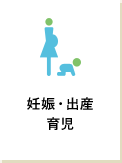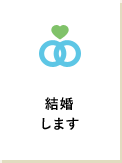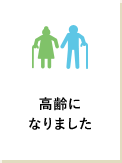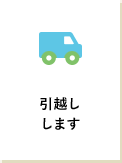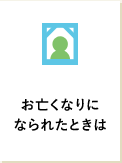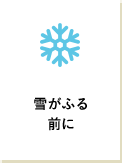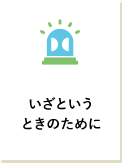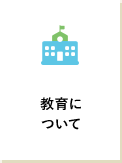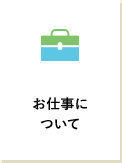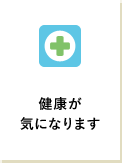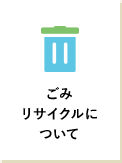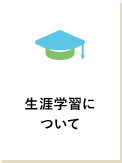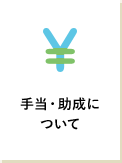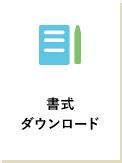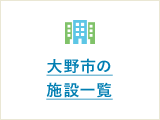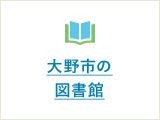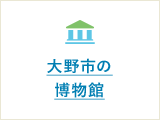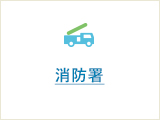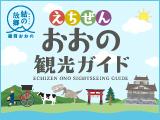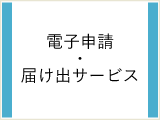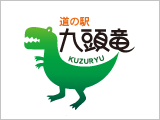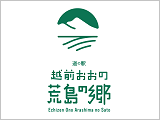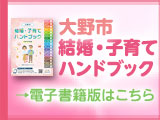Ono City
![]()
- Ono City
- Outline of Ono City
- Population and Households
- City Symbol and Its History
- Ono City’s Flower, Bird, and Fish
- Development of Ono City
- Chronology of Ono City
- Charter of Ono Citizens
- Ono City’s Educational Ideals
- For Ono City’s City Profile
- For Access to Ono City
![]()
Ono City
![]()
Ono City, located in Fukui prefecture, is a castle town wihich is rich with history, culture, and tradition. Ono City is blessed with nature, water, and food. It is also full of greenery due to the surrounding mountains of the Hakusan: the sacred mountains.
This castle town, now a main urban area, was built more than 400 years ago by Kanamori Nagachika, a retainer of Oda Nobunaga, and a master Japanese warlord. Kanamori constructed the Ono Castle at Kameyama in the Ono Basin, as the castle town was built on a grid at the foot of Kameyama. Today, Ono City retains a strong local threshold as a castle town, which is now called “Little Kyoto in Hokuriku.” The “Shichiken Asaichi [Shichiken morning market]” which takes place on Shichiken Street, has a 400-year old history. You can find agricultural produce as well as processed goods on the streets of this morning market. It is open from around 07:00 AM until 11:00 AM from late March, or the Spring Equinox, through December.
When the Ono Basin is covered by a sea of clouds, and only the Kameyama area appears, almost as if floating in the air, the “Echizen Ono Castle-the castle in the sky” makes its appearance. (We call the castle “Ono Castle,” which was built between the age of the provincial wars [from the late 15th century through the early 17th century] and the Edo Period [1603-1868]. The modern-day reconstructed castle tower is called the “Echizen Ono Castle.”
For the Echizen Ono Castle and the castle in the sky, ![]() please click here.(外部サイト)
please click here.(外部サイト)
Ono is a city where water created its culture.
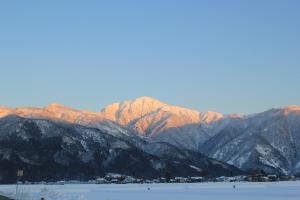
The Ono Basin is surrounded by grandiose nature, like the Arashimadake. It is one of the one hundred most exquisite mountains in Japan. Beautiful spring water comes trickling down from the mountain and provides locals with rich blessings. The Japanese call this spring water “shozu.” We have many kinds of famous spring waters such as “Oshozu,” one of the exclusive one hundred most exquisite waters of Japan, and “Hongan Shozu,” another of the exclusive one hundred exquisite waters of the Heisei of Japan. Consequently, Ono City is one of the one hundred specially selected places for water in Japan.
![]()
Because of our high quality of water, we can offer excellent foods and drinks such as rice, soba (Japanese buckwheat noodle), shoyu (soy sauce), miso (fermented soybean paste), and Japanese sake. Ono City offers not only Japanese cuisines, but also various other cuisines.
Ono City is a safe place, with low crime rates. Women can walk around town in the evening. There are many bars open until late at night.
![]()
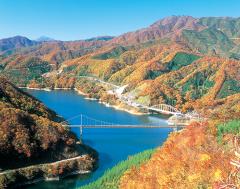
You can also enjoy nature changing beautifully in accordance with the seasons, on top of seasonal festivals, and various hands-on experiences of Japanese culture.
For more details from the sightseeing guide page, ![]() please click here.(外部サイト)
please click here.(外部サイト)
Ono City is called “Yui no Kuni Echizen Ono.” “Yui” means connecting with each other. People in Ono City have been fostering customs of helping each other and making connections with various other regions. “Kuni” means home. Ono City is a home full of connections.
“Yui” also refers to a custom of helping each other. In the past, living in a village meant that people had to support one another in agriculture, such as rice transplanting and rice reaping; working in the mountains with hunting and tree planting; repairing and fixing roads or replacing bridges; and various ceremonial occasions.
In addition, the word “Yui” contains deeper meanings that Ono City played a role in connecting different regions in history and revitalizing each of these regions.
![]()
Outline of Ono City
Location / Climate / What to wear
Location
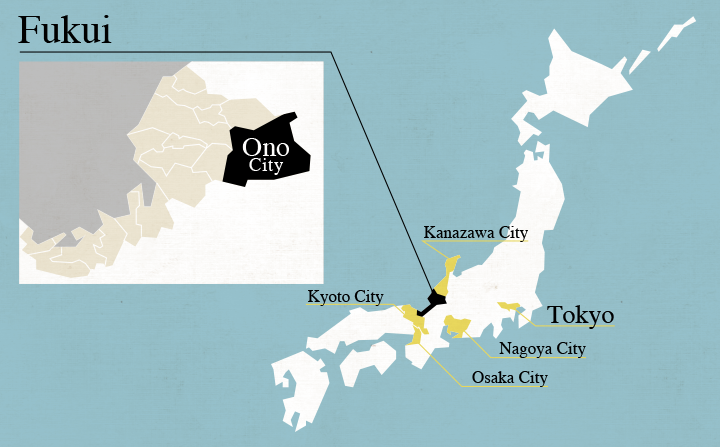
Ono City is located inland in the eastern Fukui Prefecture. The city borders Hakusan City of Ishikawa Prefecture and Katsuyama City in the north; Takayama City, Gujo City, Seki City, Motosu City, and Ibigawa Town of Gifu Prefecture in the east and south; and Fukui City and Ikeda Town of the Imadate County in Fukui Prefecture in the west. Ono City is located 136.29 ° eastward in longitude and 35.58 ° northward in latitude.
Source: The Ono City Hall and Geospatial Information Authority of Japan
Ono City has a total area of 872.43 square kilometers. It is the largest city in Fukui Prefecture, and about 90% of the city is covered by forests. It is rich in nature, surrounded on all four sides by beautiful mountains, including the Arashimadake, one of the selected one hundred most exquisite mountains of Japan.
As for roads in Ono City, the Japanese national highway 157 runs north and south, and national highway 158 runs east and west, connecting the Tokai Hokuriku Expressway in the east and the Hokuriku Expressway in the west. The Japan Railway’s (JR) Etsumihokusen Line runs nearly parallel to the national highway 158, connecting to the JR Hokuriku Main Line at Fukui Station.
![]()
Climate
![]()
Fukui Prefecture is located in the western edge of Hokuriku, facing the Japan Sea. Consequently, it has cloudy and snowy weather in the winter. In particular, Ono City is located in the eastern inland called the Okuetsu district, which has low temperatures and large amounts of snow in the winter because of its geography and the seasonal winds. Both Tokyo and Fukui face the Pacific Ocean with almost the same latitude. Compared to Tokyo, Fukui has an average temperature that is about 2.7 °C lower in temperature, 36% of the duration of sunshine that Tokyo gets, and about six times more rainfall. The average temperature of Ono City in August however is 0.3°C lower, with 114% of the duration of sunshine that Tokyo gets, and 88% of the amount of rainfall in Tokyo. As for the weather in August, there is not much difference between Ono City and Tokyo.
![]()
What to Wear
January & |
Down jackets, coats, scarves, and gloves |
|---|---|
March |
Down jackets and coats |
April |
Jackets and sweaters |
May |
You may sometimes need jackets, sweaters and coats |
June |
Short-sleeve and long-sleeve shirts. You may sometimes need thin cardigans. |
July & August |
Short-sleeve shirts |
September |
Short-sleeve & long-sleeve shirts |
October |
Long-sleeve shirts & cardigans |
November |
You may sometimes need jackets, sweaters, and coats. |
| December | Down Jackets, coats, scarves, and gloves |
Specialty Local Produce
Taking advantage of the wide temperature difference between day and night, Ono City has always been producing high quality agricultural produce. In particular, taros in Ono City are firm and do not become mushy, and they are popular in taste and textures. Specifically, taros grown in the Kamisho district are particularly firm, popularly known as “Kamisho Taros.” Taros are planted in April and early May and harvested between October and December.
Population and Households
As of 1 January 2025
| Population | 29,814 |
|---|---|
Household |
11,631 |
![]()
City Symbol and Its History
![]()
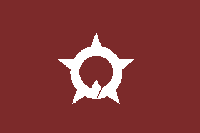
![]()
This is the city symbol that was designated in July 1954 when the municipality of Ono City started.
This symbolizes Ono City. The circle represents harmony and solidarity, and the harmonious implementation of city governance. The five sword tips represent the future developments of Ono City.
![]()
Ono City’s Flower, Bird, and Fish
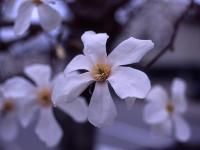
Ono City’s Flower: Magnolia kobus
The Magnolia Kobus grows wild in the mountains of Ono City. In spring, these flowers are the first to bloom. The flowers are pure white, and people get an image of cleanliness from these flowers. They’re also indicative that spring has come.
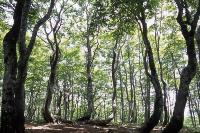
Ono City’s Tree: Fagus crenata
The Fagus crenata grow wild in the mountains of Ono City. In spring, they burgeon earlier than other trees. The Fagus crenata forests greatly contribute to fostering water sources, and purifying the air. Because many wild animals live in the fagus crenata forests, they are a symbol for environmental friendliness. Ono City has purchased 196 hectares of primeval forest called the Heikidaira and protects it.
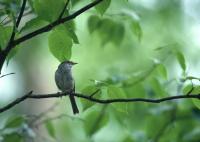
Ono City’s Bird: Nightingale
The Nightingales live all over Ono City and sing beautifully. They are called “Haru Tsuge Dori” [Birds that tell spring has come] in Japanese. They are synonymous to the warmth in early spring, when the trees start to sprout. In Ono City, you can hear the nightingales’ sound in the higher mountains in summer. All people, from the young to the elderly, enjoy these birds’ singing.
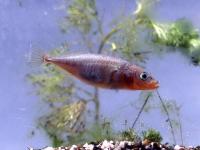
Ono City’s Fish: Three-spined stickleback
Three-spined sticklebacks that inhabit freshwater bodies are limited only in spring water areas like that of Ono City’s Hongan Shozu. They are an extremely rare type of fish. It is indispensable for them to have pure spring water, with the water temperature at 20 °C or higher to survive. They are a symbol to maintain underground fresh water. Hongan Shozu is the southern limit for these Three-spined sticklebacks that inhabit freshwater bodies. They have become natural treasure.
For the Hongan Shozu Itoyo-no-Sato Museum,![]() please click here.(外部サイト)
please click here.(外部サイト)
Development of Ono City
History up to the end of the Edo Period
Ono was initially established and developed as a castle town after 1332, as a transportation hub to connect two domains: Echizen and Mino. After the downfall of the Asakura Clan in 1573, those who carried out the Ikko Ikki [large-scale uprisings in the late 15th and 16th centuries by adherents of the Jo-do Shin sect of Buddhism] ruled this area. Oda Nobunaga soon crushed these uprisings. In 1575, Kanamori Nagachika, a retainer of Oda Nobunaga and a master warlord, came to rule most of Ono as part of his military exploits.
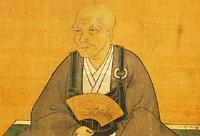
Nagachika Kanamori
Nagachika first constructed a castle in Kameyama and began to build a castle town on a grid that resembled Kyoto. This was the beginning of the current main urban area, and since then for about 430 years, Ono has been flourishing as a center of the Oku Echizen region. Following Kanamori Nagachika, Hasegawa, Aoki, Oda, Matsudaira, and Doi Toshitada were appointed as lords of Ono in 1682. However, the Ono domain was divided into domains of Katsuyama, Gujo, Sabae, and Fukui, as well as the shogun-ate government, and the Doi Family continued to rule Ono as Daimyo (a feudal lord) with 40,000 goku [about 3 billion yen or about $28 million] for about 180 years until the Meiji Restoration.

Toshitada Doi
In 1842, Doi Toshitada, Lord of the Ono Domain, implemented “Koshi no Rei” [an order of political reforms of the domain] to rebuild the domain finance. Uchiyama Ryokyu and Uchiyama Ryosuke (brothers) made great efforts in this reform, making great strides in various projects, such as encouraging new industry and developing human resources. Uchiyama Ryokyu opened a publicly-managed “Onoya,” and managed this store while directly imitating merchants. In addition, he also engaged in managing copper mines. He made great success in the economic field, repaying a large amount of debt that the Ono domain had at the time, and contributing to the reconstruction of the domain finance. Uchiyama Ryosuke is said to have a wide range of communications with Katsu Kaishu, Sakuma Shozan, Yoshida Shoin, and many others. He promoted Dutch studies, renovated military preparedness, built the “Onomaru” [a western-style sail boat], propelled the development of Ezo [Hokkaido], and did many other historical significant things.
Municipality Merger
In 1878, all the feudal domains were abolished, and in 1889 a new municipality system was implemented. The Ono domain was broken into one town and 10 villages: Ono, Shimonosho, Inuikawa, Koyama, Kaminosho, Tomita, Sakadani, Goka, Nishitani, Kamianama, and Shimoanama. In 1896, Itoshiromura was established after separation from Shimoanamamura. Shimonoshomura became a town in November 1951. On 1 July 1954, two towns and six villages merged into Ono City. On 1 July 1970, Ono City incorporated Nishitanimura. In 1956, Kamianamamura and Shimoanamamura merged into Izumimura. In 1958, Izumimura incorporated a part of Itoshiromura. On 7 November 2005, Ono City merged with Izumimura.
Chronology of Ono City
・ For the Chronology of Ono in the primitive ages (Jomon, Yayoi, Tumulus, Nara, Heian, Kamakura and Muromachi periods),
・For the Chronology of Ono in Recent times (Azuchi, Momoyama, and Edo periods),
・For the Chronology of Ono in the Modern age (Meiji, Taisho, and Showa periods),
Charter of Ono Citizens
Ono is located on the upstream of the Kuzuryu River, blessed with clean water, fresh air, and nature with rich greenery. Ono developed based on the city’s historical and geographical features, such as the simple and peaceful nature, the enterprising spirit represented as Onomaru at the end of the Edo period, and the stubborn perseverance of locals- unique to snowy regions. We will cherish the beautiful nature and shining traditions, and establish the following citizen’s charter, aiming to build a town that is comfortable to live in and worth living for.
+We will build a town with unfading beauty.
We will protect our beautiful nature and build a prosperous region.
+We will build a town where a little bud will grow.
We will cherish our tradition and foster new culture.
+We will build a town that has the potential to grow big.
We enjoy working and making efforts to develop our region.
+We will build a town where we evoke an empathetic response from neighbors.
We will build healthy and happy families and extend our kindness.
+We will build a town where we have joy and comfort.
We will make positive participation to build a town where we feel comfortable to live in.
Ono City’s Educational Ideals
People in Ono cherish and foster “Meirin no Kokoro”[ethics to be observed as human beings].
Oath
“Meirin no Kokoro,”[ethics to be observed as human beings] clearly shows the way human beings should live, and fostering enterprise is always the basics of learning in Ono at any time. We will cherish this mindset and make efforts in learning and fostering, so as to be kind, wise, and robust adults.

